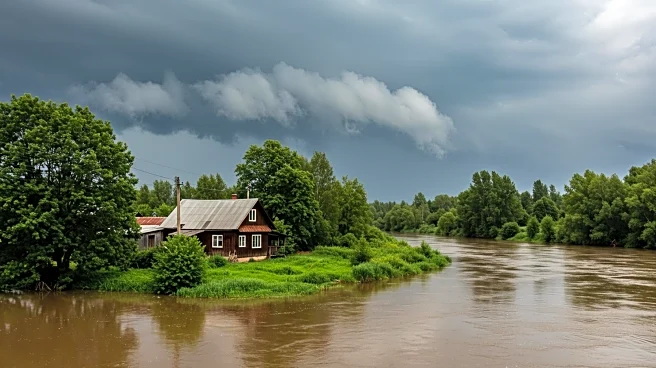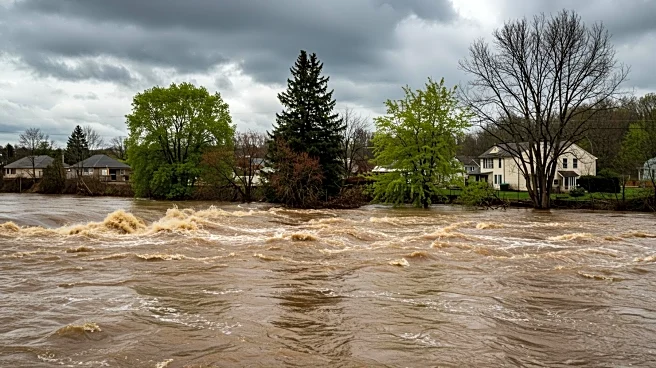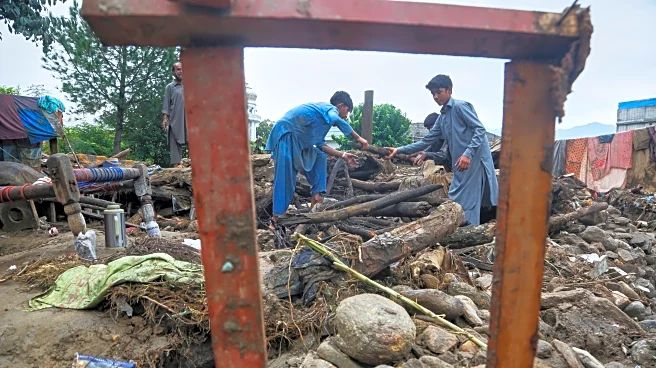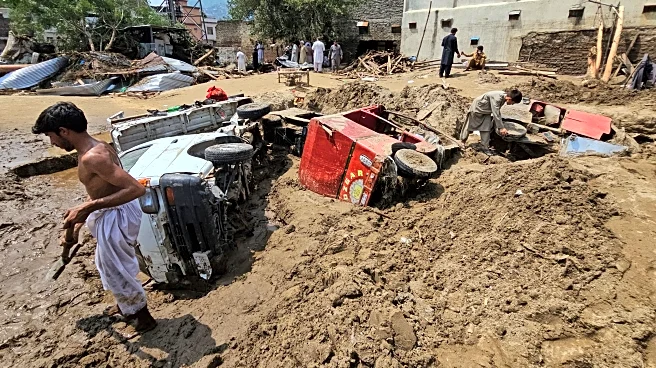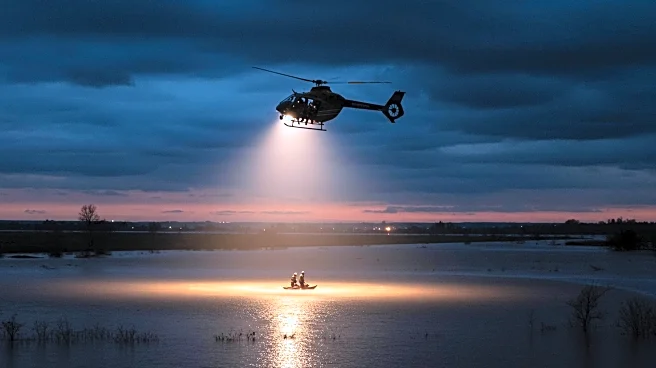What's Happening?
Flash floods in Pakistan have caused widespread devastation, particularly in the Khyber Pakhtunkhwa (KP) province, resulting in at least 340 deaths and hundreds missing. The floods have wiped out entire villages, with mass burials taking place. The hardest-hit areas include Buner's Chagharzi and Bashoni, which have been severely affected. Pakistan's National Disaster Management Authority reports that since June 26, torrential rains, flash floods, and landslides have killed 657 people, including 171 children and 94 women, and injured 929. Rescue operations are ongoing, but hopes of finding survivors are diminishing.
Why It's Important?
The floods in Pakistan highlight the severe impact of climate-related disasters on vulnerable regions. The destruction of homes and infrastructure poses significant challenges for recovery and rebuilding efforts. The loss of life and displacement of communities underscore the urgent need for effective disaster management and international aid. The situation may exacerbate existing socio-economic issues, as affected areas struggle to cope with the aftermath. The floods also serve as a stark reminder of the increasing frequency and intensity of climate-related events globally.
What's Next?
The Pakistani government has declared several mountainous districts as disaster-hit and is bracing for more torrential rains in the coming days, which could lead to further destruction. Rescue workers continue to search for survivors, but the chances are slim. The government and international organizations may need to coordinate relief efforts and provide aid to the affected regions. Long-term strategies for disaster preparedness and climate resilience will be crucial to mitigate future risks.
Beyond the Headlines
The floods in Pakistan raise ethical and humanitarian concerns regarding the prioritization of international aid and resource allocation. The disaster may prompt discussions on climate justice and the responsibility of developed nations to support vulnerable countries facing climate-related challenges. Additionally, the cultural impact on affected communities, including the loss of heritage and traditional ways of life, could have lasting effects.
